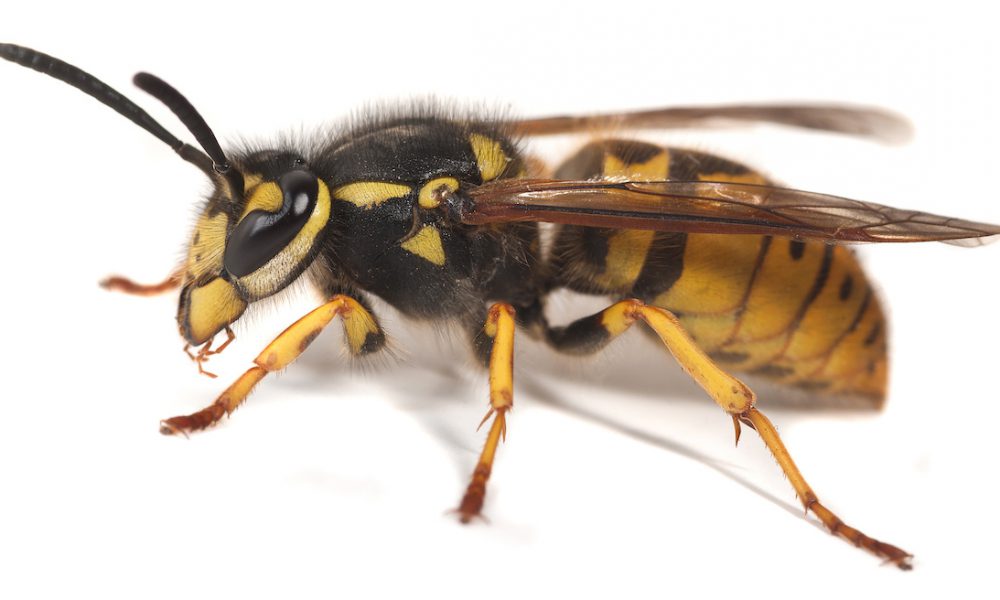
Did you know that a single Yellow Jacket repeatedly stings so avoidance is the best policy? Its venom is more potent that honey bee venom and stings are very painful.
What are Yellow Jackets?
Yellow jackets are a type of wasp. Wasps, in general, make up a wide range of insects with over 30,000 known species. People confuse yellow jackets for bees, given their black and yellow body segments.
Yellow Jacket Facts
- Live in colonies and are social insects
- Nests can contain thousands of wasp.
- They eat fruit and plant nectars
- Yellow Jacket is a city in Colorado
- Buzz is the Georgia Tech mascot, and he is a yellow jacket
- Yellow jacket stingers are found at the end of their abdomens
Appearance
Yellow jackets have pointed lower abdomens, and thin waists and they have two wings that measure about 1.5 inches in length.
Colonies
These wasps live in colonies that contain queens, workers, and male drones. Queens are slightly larger at ¾ inch than workers and male drones which both measure about a ½ inch in length.
The colonies are active for a year, with the queen emerging in late spring or early summer to choose a nesting site in which to lay her eggs. Yellow jackets are often considered a nuisance because nesting sites are often found close to the home. Some of the yellow jackets’ favorite nesting sites are under porch steps, along sidewalks and walkways, at the base of trees, and at the corners of buildings. The queen will often utilize a void in a wall or low-lying bush in which to create her nest.
The queen lives through the fall, constantly laying eggs inside the nest and feeding the larvae for a period of 18 to 20 days until they reach maturity. Through this period the colony expands rapidly, reaching a maximum of 4,000 to 5,000 workers and containing 10,000 to 15,000 cells by the late summer. After the initial larvae mature, they take on the responsibility of feeding and caring for the other larvae. These infertile female workers forage for food and defend the growing colony as the queen continues to lay her eggs, which she will continue to do until her death.
Beneficial to Environment
Even if yellow jackets are proving to be a nuisance for you around your home, they are beneficial to the environment as they are responsible for eating other nuisance insects like beetles, grubs, and flies!
Eliminate Yellow Jackets
Yellow jacket infestations in residential areas are common. Careful inspection of your home should be conducted in order to determine the nest’s location and determine steps to eliminate it safely. Nests are usually small in size, but if left undisturbed, some can grow to be very large and house enormous populations.
For your safety, consult a qualified pest control professional. Trained technicians can apply a fast acting natural product to the nest that works quickly to eliminate the colony all while keeping our customers safe.
If you’re in any of the surrounding areas, give Proactive Pest Control a call at 770-800-PEST or 770-800-7378.
Contact Us
Choose Proactive Pest Control for professional, comprehensive, guaranteed pest, and lawn management. The pros at Proactive will work diligently to gain your trust, confidence, and your total satisfaction. CALL US TODAY at 770-800-PEST to schedule a free, no obligation inspection and evaluation for your home or business. Or, contact us for a FREE consultation. Let us show you why Proactive Pest Control is northeast Georgia’s first choice for pest, termite, and lawn services.